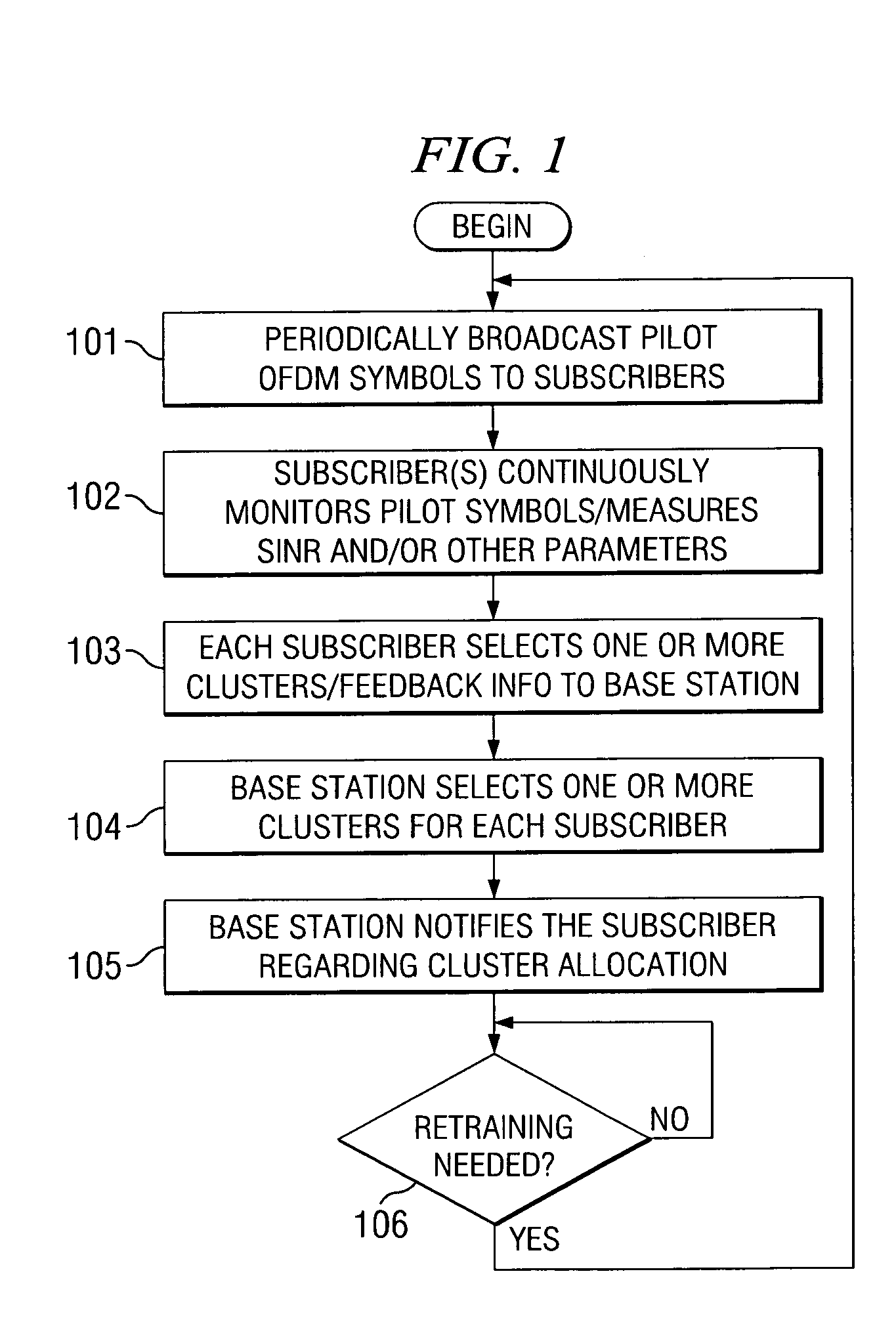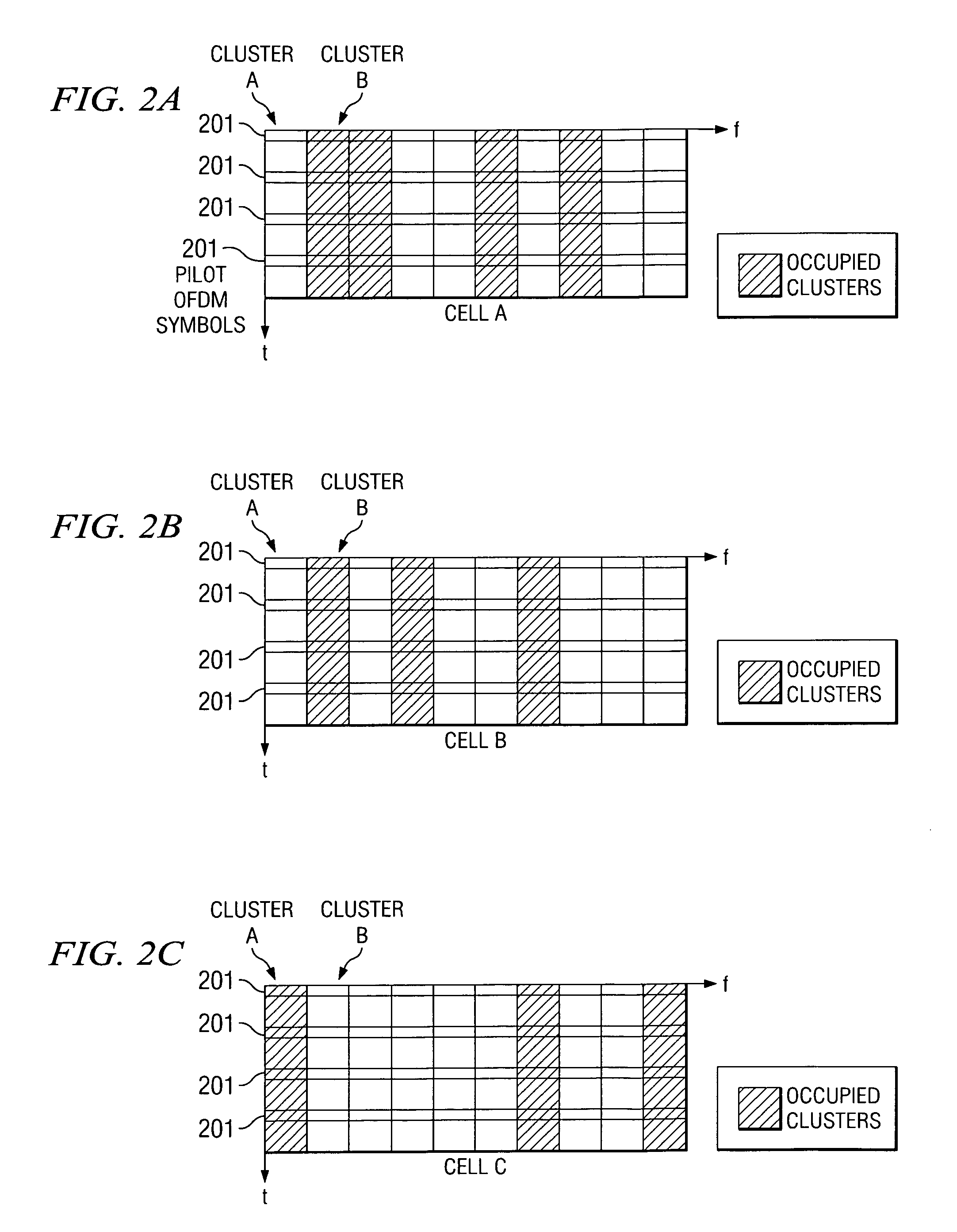Multi-carrier communication with time division multiplexing and carrier-selective loading
a multi-carrier, carrier-selective technology, applied in the field of communication systems, can solve the problems of unfathomable varying delays associated with multiple carriers, resource waste, and inability to directly apply tdm scheduling algorithms designed for single-carrier systems
- Summary
- Abstract
- Description
- Claims
- Application Information
AI Technical Summary
Problems solved by technology
Method used
Image
Examples
Embodiment Construction
[0018]A high-performance multi-carrier, TDM system, including carrier allocation, carrier loading, TDM signaling, and many other aspects, is disclosed.
[0019]The methods disclosed herein are described using the example of OFDMA, where a carrier is corresponding to a cluster, containing multiple OFDM frequency subcarriers. However, it should be noted that the methods are not limited to just OFDMA. The methods directly apply to much more generic multi-carrier systems, where a carrier can be, for example, a frequency cluster in OFDMA, a spreading code in CDMA, an antenna beam in SDMA (space-division multiple access) system, a data stream from one transmit antenna in a multi-input multi-output (MIMO) employing antenna arrays at both the transmit and receiving sides. Indeed, the methods can be applied to a much broader area of data networking systems containing multi-input, multi-output multiplexers (switches) with a property that the transmission rate of each output port depends on the c...
PUM
 Login to View More
Login to View More Abstract
Description
Claims
Application Information
 Login to View More
Login to View More - R&D
- Intellectual Property
- Life Sciences
- Materials
- Tech Scout
- Unparalleled Data Quality
- Higher Quality Content
- 60% Fewer Hallucinations
Browse by: Latest US Patents, China's latest patents, Technical Efficacy Thesaurus, Application Domain, Technology Topic, Popular Technical Reports.
© 2025 PatSnap. All rights reserved.Legal|Privacy policy|Modern Slavery Act Transparency Statement|Sitemap|About US| Contact US: help@patsnap.com



